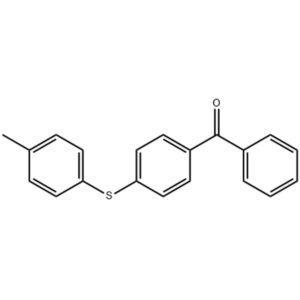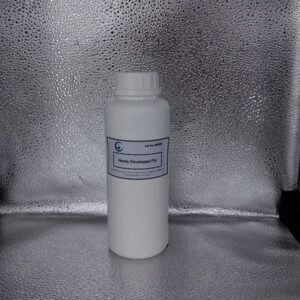描述
光引发剂 819 / Irgacure 819 / Omnirad 819 / Speedcure BPO CAS 162881-26-7
化学名称:苯基双(2,4,6-三甲基苯甲酰基)氧化膦
同义词:819;Omnirad 808;Omnirad 819; 819;光引发剂 BAPO;Speedcure BPO;CGI 819;Chivacure 789;GENOCURE BAPO;Photoinitiator 920; 920
Cas No: 162881-26-7
标准配置:
| 项目 | 规格 |
| 外观 | 淡黄色粉末 |
| 化验(高效液相色谱法) | ≥99.0% |
| 熔点 | 129~133°C |
| 挥发物 | ≤0.2% |
| 酸值(Mg KOH/g) | ≤0.2 |
| 灰烬 | ≤0.1% |
功能 & 应用:
早期,传统的固化方法无法满足复杂的材料和工艺要求。紫外光固化技术的出现犹如黑暗中的一缕曙光。光引发剂 819 的诞生为这项技术注入了强大的动力。其独特的性能使紫外光固化技术突破了许多限制,应用范围更加广泛。
光引发剂 819 的独特之处在于它对光的非凡 "控制 "能力。它就像一位精确捕捉光能的大师,具有很强的吸收长波紫外线(如 365 纳米和 405 纳米)和部分可见光的能力。这种能力并非简单的物理现象,其背后有着深刻的化学原理。光引发剂 819 的这种特殊吸光能力使其在较厚的涂层或较深的区域中发挥奇效,达到极佳的固化效果。
在紫外光固化领域的实际应用中,光引发剂 819 的表现令人惊叹。
让我们来看看厚膜涂料的光固化领域。传统的光引发剂在面对厚涂层和厚膜固化应用时往往 "力不从心",而 819 则像超级英雄一样挺身而出。其惊人的高吸收效率和出色的深层渗透性是它的法宝。以木材、塑料和金属表面的厚膜涂料为例。在这些材料上实现均匀固化是一项真正的挑战。然而,819 却能轻松应对。它能深入涂层,促进内层和表面同时固化,达到均匀固化的效果。这就好比建造一座高楼。它不仅能确保外墙坚固美观,还能确保内部结构同样坚固稳定,确保整栋建筑的质量。
Photocure 819 在不透明或有色涂层方面也具有独特的优势。在这方面,吸收和利用可见光是关键。819 在可见光范围内的吸收能力就像打开了一扇新的大门。以彩色油墨和不透明涂层为例。这些材料通常会干扰光引发剂的效果,但 819 仍能在如此复杂的环境中引发聚合反应,达到良好的固化效果。这就好比一艘船在浓雾中航行,利用特殊的导航设备(819 的可见光吸收能力)找到正确的方向,顺利到达目的地(固化)。
光引发剂 819 在紫外线粘合剂的应用中也大放异彩。紫外线固化胶粘剂在现代工业和生活中发挥着重要作用,用于粘接玻璃、陶瓷、塑料和金属。819 是胶水的 "智能大脑",使其能够在紫外线下快速固化,并具有惊人的耐黄变性能。这对于要求长期美观和透明的粘接应用至关重要。例如,在高端电子产品的组装过程中,使用含有 819 的紫外线粘合剂将玻璃屏幕与塑料边框或金属部件粘合在一起,不仅能确保粘合牢固,而且在长期使用后仍能保持透明度,不会因黄变而影响产品的外观和性能。粘接后的产品仿佛获得了永恒的青春。
光引发剂 819 还展示了其在 3D 打印光刻胶领域无与伦比的价值。在这个充满创新和挑战的领域,高精度的打印效果是我们追求的目标。819 的引发效率和深度固化能力就像是 3D 打印的 "秘密武器"。尤其是在处理厚度较大或结构复杂的打印任务时,它能迅速生效,实现快速固化。这就好比一位技艺精湛的雕刻家,在塑造复杂的艺术品时,819 可以帮助树脂材料快速成型,确保每一个细节都准确无误,推动 3D 打印技术在工业设计、医疗模型制造等领域的广泛应用。
光引发剂 819 在 LED 固化应用中也表现出色。随着技术的发展,低能耗 LED 固化设备逐渐成为主流。819 能够有效吸收长波紫外线和部分可见光的特性使其与 365nm 或 405nm LED 等 LED 光源完美匹配。这种良好的兼容性就像两个默契的搭档,共同为低能耗、高效率的固化系统做出贡献。在环保和节能日益重要的今天,819 在 LED 固化应用中的优势尤为突出,为绿色制造提供了强有力的支持。
此外,光引发剂 819 还有一个巧妙的应用策略,即与其他引发剂(如 184、TPO 等)结合使用。这就像组成一个超级团队,每个成员都有自己的专长,他们相互协作,相辅相成。通过使用这种混合物,可以优化固化速度和材料性能,从而将光固化技术提升到一个新的水平。这背后是复杂的化学协同原理。它们之间的比例和相互作用就像一个神秘的公式,为紫外光固化技术带来了更多的可能性。
参考剂量:
| ▶ 透明丙烯酸和不饱和聚酯/苯乙烯涂料 |
| 0.1- 0.2% 819 + 1-2% 184 |
| 白色丙烯酸和不饱和聚酯/苯乙烯涂料 |
| 0.5-1% 819 + 1-2% 184 |
| 彩色丙烯酸配方 |
| 0.5-1% 819 + 1-2% 184 |
| 白色丝网印刷油墨 |
| 0.5-1.5% 819 + 1-2% 184 |
| 玻璃纤维增强不饱和聚酯/苯乙烯预浸料 |
| 0.1- 0.2% 819 |
P包装和运输:
包装:20 公斤/纸箱。
交货期:5-7 个工作日。
存储:
存放在阴凉干燥处,避免阳光直射。
立即联系我们!
如果您需要价格,请在下表中填写您的联系信息,我们通常会在 24 小时内与您联系。您也可以给我发电子邮件 info@longchangchemical.com 请在工作时间(UTC+8 周一至周六,上午 8:30 至下午 6:00)或使用网站即时聊天工具获得及时回复。
| 光引发剂 TPO | 化学文摘社编号 75980-60-8 |
| 光引发剂 TMO | cas 270586-78-2 |
| 光引发剂 PD-01 | 化学文摘社编号 579-07-7 |
| 光引发剂 PBZ | 化学文摘社编号 2128-93-0 |
| 光引发剂 OXE-02 | cas 478556-66-0 |
| 光引发剂 OMBB | 化学文摘社 606-28-0 |
| 光引发剂 MPBZ (6012) | CAS 86428-83-3 |
| 光引发剂 MBP | 化学文摘社编号 134-84-9 |
| 光引发剂 MBF | 化学文摘社编号 15206-55-0 |
| 光引发剂 LAP | 化学文摘社编号 85073-19-4 |
| 光引发剂 ITX | CAS 5495-84-1 |
| 光引发剂 EMK | 化学文摘社编号 90-93-7 |
| 光引发剂 EHA | 化学文摘社编号 21245-02-3 |
| 光引发剂 EDB | CAS 10287-53-3 |
| 光引发剂 DETX | 化学文摘社编号 82799-44-8 |
| 光引发剂 CQ / 樟脑醌 | 化学文摘社编号 10373-78-1 |
| 光引发剂 CBP | 化学文摘社编号 134-85-0 |
| 光引发剂 BP / 二苯甲酮 | 化学文摘社编号 119-61-9 |
| 光引发剂 BMS | 化学文摘社 83846-85-9 |
| 光引发剂 938 | 化学文摘社编号 61358-25-6 |
| 光引发剂 937 | CAS 71786-70-4 |
| 光引发剂 819 DW | cas 162881-26-7 |
| 光引发剂 819 | cas 162881-26-7 |
| 光引发剂 784 | cas 125051-32-3 |
| 光引发剂 754 | CAS 211510-16-6 442536-99-4 |
| 光引发剂 6993 | 化学文摘社编号 71449-78-0 |
| 光引发剂 6976 | cas 71449-78-0 89452-37-9 108-32-7 |
| 光引发剂 379 | cas 119344-86-4 |
| 光引发剂 369 | cas 119313-12-1 |
| 光引发剂 160 | 化学文摘社编号 71868-15-0 |
| 光引发剂 1206 | |
| 光引发剂 1173 | 化学文摘社编号 7473-98-5 |






评价
目前还没有评价